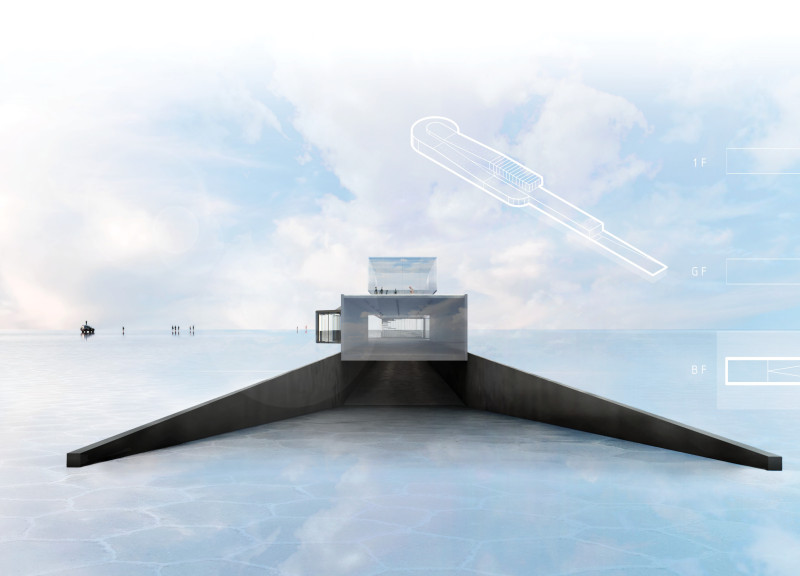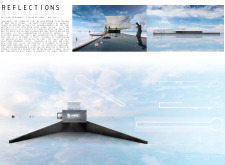5 key facts about this project
The pavilion features a layout that comprises open spaces, interconnected galleries, and contemplative zones. These design elements encourage visitor interaction and promote a fluid circulation route throughout the varying spaces. This organization is intended to facilitate engagement with the exhibits, enhancing the overall experience of the users. The architectural design emphasizes the relationship between the interior and the surrounding landscape, allowing nature to influence the experience within.
Innovative Architectural Design
One notable aspect of the Pavilion of Humanity is its integration of natural light and external views. The extensive use of glass in the upper levels allows for a direct connection between the interior spaces and the panoramic vistas of Salar de Uyuni. This design choice not only enhances the spatial quality of the pavilion, but also reinforces the theme of reflection—a metaphorical alignment with humanity’s journey and achievements.
The pavilion’s structural composition includes a robust concrete base that grounds the building, representing the historical weight of human experience. Above this lies the more delicate glass upper sections, which symbolize transparency and openness. This juxtaposition of materials fosters a dialogue between strength and fragility, suggesting that human resilience exists amid vulnerability.
Functional Design Elements
Functionality plays a crucial role in the design of the Pavilion of Humanity. The layout accommodates diverse programs, including informational exhibits, gathering spaces for community events, and contemplative areas for reflection. The thoughtful spatial organization ensures that each function is seamlessly integrated while maintaining a cohesive experience.
The pavilion's design also addresses sustainability by encouraging conversations about environmental conservation. The building’s orientation and use of local materials aim to minimize its ecological footprint, making it a model for sustainable architecture in the region.
For a deeper understanding of the Pavilion of Humanity, readers are encouraged to explore the architectural plans, sections, and design ideas presented. These documents provide valuable insights into the project's conceptual framework and reveal how thoughtful design can promote a dialogue between architecture and its environment.























